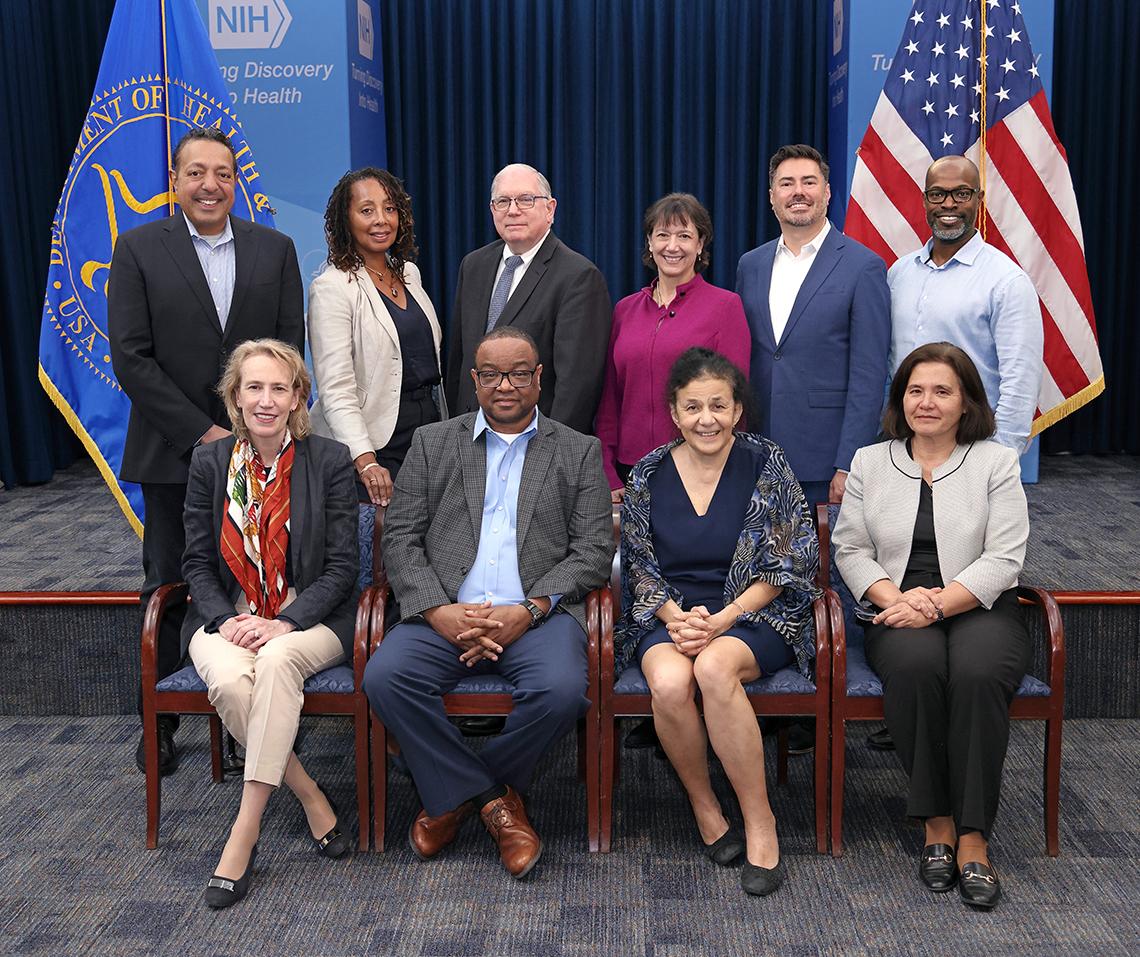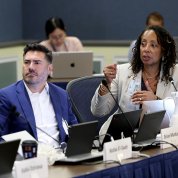Bold Steps in Critical Times
Mid-Year ACD Meeting Considers Wide Range of Topics

Photo: Chia-Chi Charlie Chang
At its 128th meeting, the advisory committee to the director (ACD) learned how NIH Director Dr. Monica Bertagnolli plans bold initiatives to answer critical needs and how NIH intends to address recommendations from several working groups.
Held hybrid style over 1½ days June 13-14, the meeting addressed topics literally from A (artificial intelligence) to Z (zettabytes).
Connecting to the Frontlines
On day one, Bertagnolli told the group about the new Communities Advancing Research Equity (CARE for Health®) network she established as a pilot program just a week before the meeting.

Photo: Chia-Chi Charlie Chang
“The impetus for this is we feel we really need to do something about the diseases of despair,” she said. “We need to be in the communities where this is happening. We need to take ownership of this problem, and the best way we thought we could do this is to focus on the primary care community as a research community, because that’s who’s on the frontlines seeing these problems.”
The health of the U.S. population is declining, particularly in areas that are underserved and underrepresented in clinical research, said Dr. Tara Schwetz, NIH deputy director for program coordination, planning and strategic initiatives, which funds CARE for Health.
“We designed a program to expand research opportunities to where people actually seek care by integrating clinical research further into primary care settings,” she explained.
CARE for Health aims to speed research advances into everyday clinical care and improve health outcomes for all Americans.
New ACD Components
The group also heard proposals to create new working groups for the Center for Information Technology (CIT) and for artificial intelligence (AI).
“Computing is part of everything we do now,” said CIT Director Dr. Sean Mooney. “The growth of computing to support the kinds of projects that we want to do in the future needs your advice.”
Referring to work by NIH’s BRAIN Initiative®, which predicts using a zettabyte of data, Mooney said that amount of computing capacity would be staggering to consider handling and NIH via CIT should make plans now.
ACD members approved creation of both new working groups.
In her director’s report earlier in the day, Bertagnolli discussed how NIH has followed up on recommendations from other ACD working groups—specifically those involving postdoctoral training, disability and novel alternative methods (NAMs).
Language Matters
In addition to boosting salary levels of early-career scientists in training posts and increasing their childcare support stipends, NIH also “tightened the definition of postdoctoral scholars to make clear that it’s a term-limited position of mentored research and professional development to prepare for an independent career,” Bertagnolli said.

Photo: Chia-Chi Charlie Chang
NIH may be changing the way its mission is worded again. One recommendation under consideration since December 2022 is to remove “reducing disability” from the NIH mission statement because the language could be perceived as perpetuating ableist beliefs that people with disabilities are flawed and need to be fixed.
Since announcing the proposed change and asking for public opinion in August 2023, NIH has received 480 comments, including many strong opposing views. About 40% of respondents feel disability should be added back to the mission statement, either as it was or using different wording such as “optimized function” or “maximize abilities.”
“We plan to get more input before finalizing the mission statement,” Bertagnolli said. NIH last amended its mission statement in 2013 when “the burdens of” was removed.
Terminology changed for NAMs, which an ACD working group report on the topic defines as “in silico, in chemico and in vitro methods that can refine and replace the use of animals and emphasize those with the greatest potential for human relevance.”
Formerly described as “novel alternative,” NAMs are now called “new approach” methods.
Catching Up on Ongoing Concerns
By the end of day two, the ACD had heard updates from its working group on diversity, and on the NIH HEAL Initiative® and Long Covid research endeavors. Briefings had been given on other ongoing issues as well, including the NIH BRAIN Initiative, INvestigation of Co-occurring Conditions across the Lifespan to Understand Down SyndromE (INCLUDE) and women’s health research overall.
“I hope we’ve given you a view that we intend to be bold and do some things that people need,” concluded Bertagnolli. “Because people need us to step up and take leadership in some really critical areas that I don’t think any organization but NIH can take the lead. We so appreciate your support. Your input is absolutely critical. We couldn’t do anything that we do—especially not any new bold initiatives—without the reality check we get from our ACD.”
ACD meetings are public and the proceedings are archived online: day one, https://videocast.nih.gov/watch=54652, and day two, https://videocast.nih.gov/watch=54654. Access meeting agenda, reports and other documents at https://acd.od.nih.gov/meetings.html.

Photo: Chia-Chi Charlie Chang









